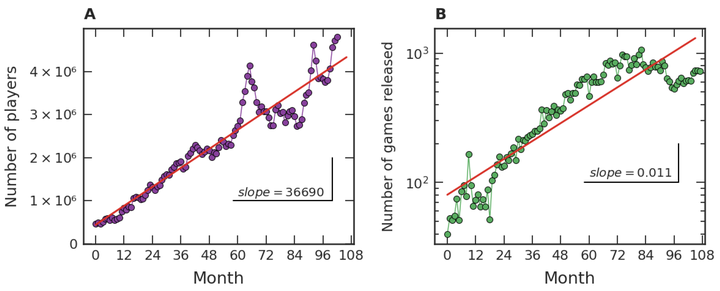
Abstract
Describing the permanence of cultural objects is an important step in understanding societal trends. A relatively novel cultural object is the video game, which is an interactive media, that is, the player is an active contributor to the overall experience. This article aims to investigate video game permanence in collective memory using their popularity as a proxy, employing data based on the Steam platform from July 2012 to December 2020. The objectives include characterizing the database; studying the growth of players, games, and game categories; providing a model for the relative popularity distribution; and applying this model in three strata, global, major categories, and among categories. We detected linear growth trends in the number of players and the number of categories, and an exponential trend in the number of games released. Furthermore, we verified that lognormal distributions, emerging from multiplicative processes, provide a first approximation for the popularity in all strata. In addition, we proposed an improvement via Box–Cox transformations with similar parameters (from −0.12 (95% CI: −0.18, −0.07) to −0.04 (95% CI: −0.08, 0)). We were able to justify this improved model by interpreting the magnitude of each Box–Cox parameter as a measure of memory effects